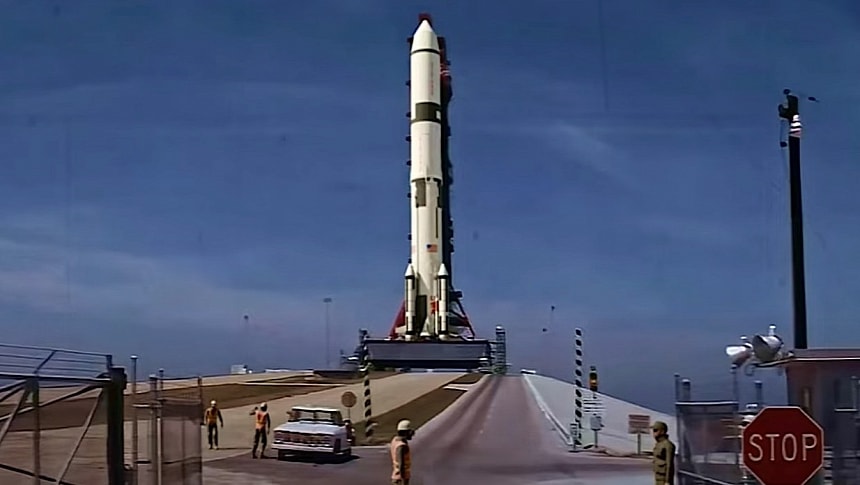Before the Space Launch System rocket of the Artemis program and SpaceX's Starship got here, the Saturn V rocket used in the Apollo Moon exploration program was humanity's largest and most powerful rocket. And even if it no longer is, it still holds the record for the largest payload ever sent to orbit: 311,152 pounds (141,136 kg).
The Saturn V was used by NASA in no less than 13 missions, with only one of them, Apollo 6, ending in partial failure, and all the others succeeding as planned. That meant NASA's higher-ups were looking back then to make the monster even more… monstrous.
The upgrade to the Saturn V was called Modified Launch Vehicle, or MLV. The Marshall Space Flight Center was tasked with coming up with the upgrades that would have made the rocket more capable than it had ever been.
The main areas of focus for the NASA team were an increase in thrust and size. That meant modifications had to be made to both the engines and the overall structure of the Saturn V.
To increase thrust engineers at Marshall considered modifying the engines used in the first stage of the rocket. Called F-1, they were produced by Rocketdyne and they were able to generate 1.5 million pounds of thrust at sea level.
NASA planned to make the engines even more capable, or increase their number from five in the Saturn V to six in the MLV. As a result, the capacity of the fuel tanks would have needed to be increased as well.
The Saturn V didn't use solid rocket boosters in its initial form, but NASA considered gifting it with some for the MLV configuration and eyed the United Aircraft-made ones called UA1205 and used on the Titan rocket.
As far as size is concerned, the Saturn MLV would have added 240 inches (610 cm) of height to the first stage (needed in part to accommodate the increased fuel capacity), and 41 inches (100 cm) to the second stage.
NASA imagined the Saturn MLV not as a singular rocket, but as a family of them. While most would have used conventional rocket propellant, engineers even imagined a version that would have used nuclear propulsion for the third stage.
Like many other ideas in space exploration, the MLV never came to be in the real world. The project, although it included no less than 13 variants, never made it off the drawing board, meaning there is no way for us to imagine how a single one would have looked like in flight.
Yet here is one MLV rocket gloriously taking flight in a computer-generated video put together by animation specialist Hazegrayart. We see the thing lift off in the purest 1970's style and soar to the sky as it was supposed to.
The upgrade to the Saturn V was called Modified Launch Vehicle, or MLV. The Marshall Space Flight Center was tasked with coming up with the upgrades that would have made the rocket more capable than it had ever been.
The main areas of focus for the NASA team were an increase in thrust and size. That meant modifications had to be made to both the engines and the overall structure of the Saturn V.
To increase thrust engineers at Marshall considered modifying the engines used in the first stage of the rocket. Called F-1, they were produced by Rocketdyne and they were able to generate 1.5 million pounds of thrust at sea level.
NASA planned to make the engines even more capable, or increase their number from five in the Saturn V to six in the MLV. As a result, the capacity of the fuel tanks would have needed to be increased as well.
The Saturn V didn't use solid rocket boosters in its initial form, but NASA considered gifting it with some for the MLV configuration and eyed the United Aircraft-made ones called UA1205 and used on the Titan rocket.
As far as size is concerned, the Saturn MLV would have added 240 inches (610 cm) of height to the first stage (needed in part to accommodate the increased fuel capacity), and 41 inches (100 cm) to the second stage.
NASA imagined the Saturn MLV not as a singular rocket, but as a family of them. While most would have used conventional rocket propellant, engineers even imagined a version that would have used nuclear propulsion for the third stage.
Like many other ideas in space exploration, the MLV never came to be in the real world. The project, although it included no less than 13 variants, never made it off the drawing board, meaning there is no way for us to imagine how a single one would have looked like in flight.
Yet here is one MLV rocket gloriously taking flight in a computer-generated video put together by animation specialist Hazegrayart. We see the thing lift off in the purest 1970's style and soar to the sky as it was supposed to.









